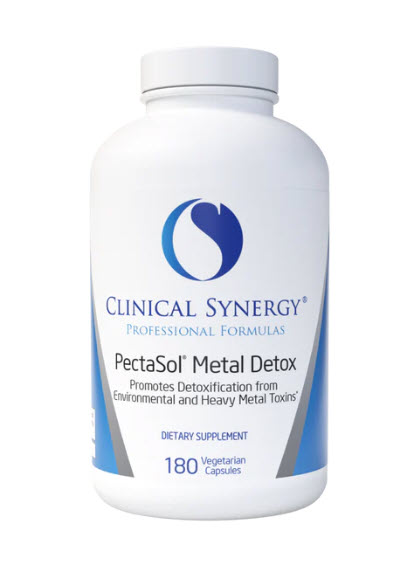
NOTE: This test is ONLY AVAILABLE TO AUSTRALIAN RESIDENTS.
C3a, C4a, VIP, and MSH are important biomarkers involved various physiological and pathological processes, contributing to immune responses, inflammation, and neuroendocrine regulation (1).
C3a and C4a are components of the complement system, playing crucial roles in immune responses.
Elevated levels of C3a and C4a may indicate excessive immune activation, as seen in chronic inflammation (1).
VIP (Vasoactive Intestinal Peptide) is a neuroregulatory hormone with anti-inflammatory properties. It regulates immune responses, gastrointestinal function, circadian rhythms, and inflammatory responses, and is an important marker for those affected by mould exposure (1).
MSH (Melanocyte-Stimulating Hormone) is part of the melanocortin system and plays a role in regulating inflammation, appetite, and skin pigmentation. Dysregulation of MSH is linked to conditions like obesity, skin disorders, sleep disorders and chronic pain (1).
Mould illness or Chronic Inflammatory Response Syndrome (CIRS) is a common but poorly recognized condition because of many debilitating (but not obvious) symptoms including chronic fatigue, generalised pain, headaches, depression, sinusitis, rashes and anxiety. Many of these conditions are caused by exposure to the interior environment of water-damaged buildings (WDBs). Chronic fatigue syndrome is often misdiagnosed and can be associated with mould exposure, as studies show a significant percentage of patients with chronic fatigue syndrome test positive for mycotoxins. These organisms grow on household surfaces that have high cellulose content, such as wood, fibreboard, gypsum board, paper, dust and lint. The most common types of mould that are found indoors include: Cladosporium, Penicillium, Alternaria, Aspergillus and Stachybotrys (black mould).
Mould Biotoxins are shed into the environment of WDBs and are acquired into the body via foods, water, air, or insect bites. They cause inflammatory responses via influencing/affecting signalling pathways in the body, releasing inflammatory cytokines. They aggravate existing lung diseases, and can cause inflammation of the lungs. Chronic illness can arise from persistent exposure to mould toxins, especially in individuals with certain genetic predispositions who struggle to clear these toxins, resulting in widespread inflammation.
In the general population, biotoxins are removed from the body via the bloodstream through the liver or alternatively broken down by the body’s immune system and excreted out of the body.
However, in patients with a compromised immune system (either genetically or environmentally), biotoxins can remain within the body for lengthy periods of time and exacerbate the above conditions. This susceptible group seem to be unable to clear mould toxins easily and efficiently. Their symptoms though are often vague, since toxins can affect any body organ. For CIRS patients, specific diets like the No-Amylose Diet and blood tests measuring biomarkers such as leptin and VEGF are crucial for understanding and managing their health outcomes.
Since mould toxins cause inflammation through activation of cytokines, there are a number of lab tests which can show the effects of inflammatio
Analytes
C3a, C4a, MMP9, TGFB1, VEGF (Included in this test)
Test Method
EIA, RIA
What is Mould Illness?
Mould illness, also known as Chronic Inflammatory Response Syndrome (CIRS), is a condition that occurs when the body’s immune system overreacts to mould exposure. This overreaction can lead to a myriad of symptoms, including chronic fatigue, muscle pain, joint pain, and respiratory issues. Mould illness is often triggered by exposure to mould in water-damaged buildings, where species like Aspergillus, Penicillium, and Stachybotrys thrive. When these moulds release spores, mycotoxins, and biotoxins into the air, they can be inhaled or come into contact with the skin, prompting an immune response that can become chronic and debilitating.
About The Test
All tests come with full instructions, including a pre-authorised practitioner script.
Home test kits come with everything you need to complete the test, including free express post return postage to the laboratory.
All pathology test kits come with a preauthorised script (including test kit/s if required) to take to your local pathology test centre.
You can click here to find a pathology near you.
Turn-around time: up to 30 days
Common Symptoms of Mould Illness / Biotoxins Toxicity
- Nutritional and Dietary Symptoms
- Chronic Inflammation
- Obesity
- Other Health Conditions
- Chronic pain
- CIRS
- Fatigue
- Fibromyalgia
- Insomnia and sleep disturbances
- Malaise
- Mould/ mold exposure
- Neurological disorders
- Poor immunity
- Gastrointestinal and Digestive Health
- Gastrointestinal issues
- Mental and Emotional Health
- Mental health
- Skin and Dermatological Health
- Skin disorders
These symptoms are often exacerbated in individuals with a compromised immune system, making it difficult for their bodies to effectively eliminate the mould toxins.
Testing for Mould Illness
Testing for mould illness involves a comprehensive approach, utilizing various types of tests to detect the presence of mould toxins and assess immune system function. Common tests include:
-
Blood tests for mycotoxins and biotoxins
-
Urine tests for mycotoxins and biotoxins
-
Stool tests to evaluate gut health
-
Skin prick tests to identify mould exposure
These tests help health practitioners pinpoint the specific mould toxins affecting the patient and determine the extent of immune system dysfunction.
Diagnosing Mould Exposure
Diagnosing mould exposure can be a complex process, as the symptoms often mimic those of other conditions. However, several tests and methods can help pinpoint mould exposure and its effects on the body.
One of the most common diagnostic tools is blood tests. These tests can measure the levels of mould toxins in the blood and assess the body’s immune response to mould exposure. Key blood tests include:
-
Mycotoxin Testing: This test measures the levels of mould toxins present in the blood, providing direct evidence of exposure.
-
Immune System Testing: This test evaluates the body’s immune response to mould exposure, identifying any abnormalities or heightened activity.
-
Inflammatory Cytokine Testing: This test measures the levels of inflammatory cytokines in the blood, which can indicate an ongoing inflammatory response due to mould exposure.
Another valuable diagnostic method is Organic Acids Testing (OAT). OAT is a urine test that measures the levels of organic acids, which are byproducts of mould exposure. Elevated levels of these acids can signal mould exposure and help guide treatment.
In addition to these tests, health practitioners may use other diagnostic tools, such as:
-
Physical Examination: A thorough physical exam can reveal symptoms like skin rashes or respiratory issues that may be linked to mould exposure.
-
Medical History: Reviewing a patient’s medical history can uncover previous mould exposure or sensitivities that might contribute to current symptoms.
-
Environmental Testing: Testing the home or workplace for mould can identify potential sources of exposure, aiding in diagnosis and prevention.
By combining these diagnostic methods, health practitioners can accurately diagnose mould exposure and develop effective treatment plans tailored to each patient’s needs.
The Role of Vascular Endothelial Growth Factor (VEGF) in Mould Exposure
Vascular Endothelial Growth Factor (VEGF) is a critical protein involved in the body’s response to mould exposure. VEGF regulates blood vessel growth and permeability, playing a significant role in the inflammatory response.
When the body encounters mould toxins, it releases VEGF to manage the resulting inflammation. However, this can lead to increased blood vessel permeability, allowing mould toxins to enter the bloodstream and exacerbate inflammation. Elevated VEGF levels are often found in individuals with mould exposure and are closely linked to Chronic Inflammatory Response Syndrome (CIRS). This condition is characterized by chronic inflammation and a range of symptoms, including chronic fatigue, muscle cramps, and respiratory issues.
VEGF is not only relevant in mould exposure but also in other conditions like chronic fatigue syndrome and fibromyalgia. In these conditions, elevated VEGF levels contribute to chronic inflammation, highlighting the protein’s role in various inflammatory diseases.
Health practitioners may use VEGF testing as part of a comprehensive diagnostic approach to mould exposure. By measuring VEGF levels, they can gain insights into the extent of inflammation and tailor treatment plans accordingly.
In managing mould exposure, dietary adjustments such as adopting a gluten-free diet can help reduce inflammation and improve symptoms. Additionally, maintaining a healthy gut microbiome is crucial, as the GI tract plays a vital role in immune system function and overall health. By addressing both dietary and environmental factors, patients can achieve better health outcomes and manage the effects of mould exposure more effectively.
Treatment for Mould Illness
Treating mould illness requires a multifaceted approach, combining medication, dietary adjustments, and lifestyle changes. Common treatments include:
-
Toxin binders like cholestyramine or Welchol to help remove mould toxins from the body
-
Dietary changes, such as adopting a gluten-free diet, to reduce inflammation and support healing
-
Lifestyle modifications, including avoiding further mould exposure and managing stress, to alleviate symptoms and promote recovery
By addressing both the physical and environmental factors, patients can achieve significant improvements in their health.
How to Complete the Test
Completing the test for mould illness involves several straightforward steps:
-
Collect a blood, urine, or stool sample, depending on the specific test being conducted.
-
Send the sample to a designated laboratory for analysis.
-
Receive the test results and discuss them with a healthcare practitioner.
-
Develop a personalized treatment plan based on the test results and individual health needs.
Following the instructions provided by the laboratory and healthcare practitioner is crucial to ensure accurate test results and effective treatment. This comprehensive approach helps in identifying the root cause of symptoms and tailoring a treatment plan that addresses the unique needs of each patient.
The GI tract plays a crucial role in fungal infections and dysbiosis, impacting overall health through the metabolism of organic acids and microbial overgrowth.
Also see the related test here.
Low levels of vasoactive intestinal polypeptide (VIP) in CIRS can lead to inflammation and immune dysregulation.







